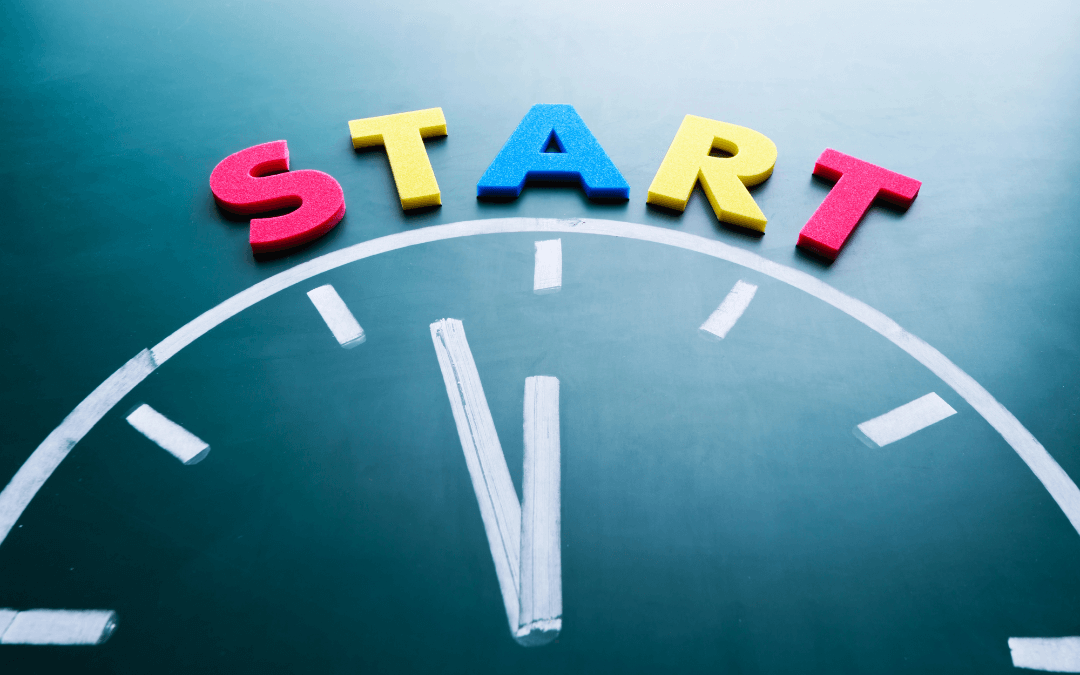You can handle your emotions – any emotion – with a simple 4-step process. Anyone can learn and practise it in less than ten minutes a day and I’m sharing the how-to with you right now.
If you have trouble simply following along, though, I understand. The process is simple but implementing it is not necessarily easy. Why? Keep reading to find out why you might struggle to handle your emotions.
Handle your emotions in 4 steps
Step 1
Practice at least two of your favourite emotional hygiene techniques every single day. Turn them into Habits for Life.
Step 2
As soon as you notice an emotion, acknowledge and label it: “I am experiencing [emotion] right now.” If you are alone, I highly recommend you say it out loud or write it down if you prefer. This already interrupts any automatic reaction the emotion might set off.
Step 3
Focus on the area in your body where the emotion sits. Notice what it feels like. For uncomfortable emotions, like fear and anger, breathe calmly and deeply until it subsides. For positive emotions, like joy and excitement, breathe regularly and allow the emotion to spread through your entire body.
If you are not sure where in your body the emotion is, use this guided meditation to find out. It works best if you practice it at first, when the emotion you want to explore is not very strong. So if you want to find anger in your body practice with mild anger or even irritation, not rage.
Step 4
Move on.
Simple, but is it easy?
Yes, you really can handle your emotions with this simple process every single time. All you have to do is pause, notice how you feel, let the emotion run its course, which takes around 90 seconds, two minutes tops, and then get back to your life.
So how come it doesn’t feel this easy? Why do we seem to be at the whim of our emotions? And how come if it is this simple, very few other people seem to be doing it? Well, there are a number of reasons why we struggle with our emotions.
Once you know what they are, living with your emotions and even using them to improve your life, becomes much easier. The process above truly is easy. All it takes is letting go of the baggage that weighs you down.

The body: emotions accumulate
We evolved emotional responses as a survival mechanism. When an event triggers an emotion, our brain sets off complex chain reactions that release hormones and neurotransmitters. Our bodies are either calmed down or woken up to prepare us for the perfect reaction to whatever event triggered our reaction.
This system is automatic and while the actual emotion lasts less than two minutes, the consequences in our bodies can last much longer. For example, when you feel excitement, your heart rate increases and your breath speeds up. It takes more than two minutes for your body to calm down again.
And that’s just the part you consciously notice. The hormones in your body that affected your organs, your brain and your muscles need to be filtered out and broken down again. This takes time. But every hit of the same emotion triggers the same physical reaction again.
Over time, the hormones and neurotransmitters accumulate. The next hit of an emotion adds to what is already there making the physical reaction stronger every time, until it is so strong that it overwhelms you. That’s why daily emotional hygiene practises are so important. They keep our emotions level at a healthy low.
Habits
Emotions and feelings habits work on two levels. The more you practice an emotion the easier it is to have it. You may have heard the phrase “Neurons that fire together wire together”. The principle for emotions is the same. Every time you feel a specific emotion, your amygdala triggers the same chain reaction. The more you experience the same emotion-reaction pair, the easier and faster it happens.
The second type of habit is behaviour we practice. Doom-scrolling, eating too much or too little, binge-watching, compulsively checking e-mails and so on are coping mechanisms we learn to use so we can avoid experiencing our emotions. Often, when people ask others to handle their emotions better, what they are really asking is “suppress them so they don’t bother me.”
Then there are physical habits, like sitting too much or sleeping too little. This kind of behaviour makes it difficult for our bodies to recover from the physical reactions emotion triggers. Why do we develop these unhealthy habits? Because we learn them from others. They are socially acceptable.

“I am…”
The rules in society change over time. Emotions are being normalised, which is fantastic because they are just reactions in our bodies. However, a less helpful side-effect is that we now take them far too seriously.
Step 4 in the process above is as important as the other steps. Why? Because when you feel the need to justify an emotion or find out where it came from, you keep thinking the same thoughts that re-trigger the same emotion again and again. You are stuck in a loop.
Thanks to society’s negativity bias, we also tend to focus on our uncomfortable and unhelpful emotions. We want to analyse and understand them but in doing so we keep them active for much longer than 2 minutes. Constant repetition keeps the emotion utmost in everybody’s thoughts and by doing so re-creates it.
Limiting beliefs
Beliefs are just thoughts we keep thinking. A few years ago, I believed I was my anxiety because I was encouraged “to take it seriously”, to figure out where it came from and what to do about it and how to handle it and so on. All I did was turn anxiety into a part of my identity.
I created a limiting belief. No emotion is a part of our identity unless we make it so through constantly thinking about it. Limiting beliefs hold us back. They are unhelpful thoughts that trigger unhelpful emotions. Every time I thought of anxiety, my amygdala started the chain reaction for fear, which of course, convinced me that being scared all the time was inevitable.
Other limiting beliefs you might have about emotions are “I’m at the whim of my emotions”, “emotions take over my life”, “once I feel [insert emotion here] there’s nothing I can do” and the biggest and most harmful one: “I am just a [emotion] person.”
No you’re not. We all have the same emotional range if we allow ourselves to experience it. Emotions are not supposed to run the show. They are tools to help us react faster, focus better, motivated us into taking action and help us make better decisions. They are never us because an emotion only lasts 2 minutes tops. Unless we keep reactivating it.

You didn’t know
Are you feeling angry right now? With me, yourself, possibly your parents or teachers? I was furious when the truth sunk in. I spent decades – not even exaggerating – depressed, anxious and filled with self-doubt. And none of it was necessary.
Or was it? I’m very passionate about this blog and the courses I offer. I could not write and share the way I do if I hadn’t learned EI Skills the hard way. Now I just feel grateful that I know what to do so I stop wasting more of my time, wallowing in emotions that just recreate a life I no longer want to lead.
The same applies to you. Don’t be hard on yourself. You didn’t know how simple handling emotions is. In some schools EI Skills are now part of the curriculum, which is thrilling! But this doesn’t mean it’s to late for you. On the contrary.
Go time
Most strong emotions, whether it’s anger, fear or elation and excitement, release energy in our bodies. Now that you let go of the emotion you no longer want to feel, use that energy for the next step.
Change your habits. Practise emotional hygiene at least twice a day. Replace limiting beliefs with useful thoughts. And most of all, handle your emotions every day the right way. All it takes is four simple steps.
